Forbidden Books: The Censorship of Chinese Books under the Manchu Qing Dynasty (1770s–1780s)
Gastbeitrag von Dr. Julia C. Schneider
For sixty years, the Qianlong emperor (1711–1799, reign 1735–1796) ruled the Manchu Qing dynasty (1636–1912) and is thus one of the longest-ruling monarchs in East Asian history – not the longest ruling though. That was his grandfather, the Kangxi emperor (1654–1722, reign 1661–1722), who ruled for sixty-one years. In order not to overhaul him, the Qianlong emperor piously abdicated in his 61st year of rule. However, his de facto power continued until his death three years later.
The reign of the Qianlong emperor has been evaluated in starkly contrasting ways. On the one hand, it is the last of the three reigns that marked the golden period of Qing times, the High Qing, together with the reigns of his grandfather, mentioned above, and his father, the Yongzheng emperor (1678–1735, reign 1722–1735). It is seen as a heyday of literature and culture, of economy and trade, of wealth and luxury, of religion and scholarship. On the other hand, however, the Qianlong emperor has been described as a despot, an autocrat, even a control freak who tried to re-write Manchu history and create a pseudo-historical Manchu identity, who harshly censored Chinese scholarship and intellectual output, and who punished political enemies excessively. Probably, both is part of the truth.
The research project that brought me to the Staatsbibliothek zu Berlin (State Library at Berlin) in June 2023 is the Qianlong emperor’s huge book censorship project, conducted in the 1770s and 1780s in the Chinese part of the Qing empire, so-called China proper. Nearly 3,000 books are said to have been censored. Even if this number is an exaggeration, it is true that nearly 3,000 books were handed in to be further inspected and examined by censors who then decided which of these books had to be burned completely or at least partly. In some particularly severe cases, printing blocks and even stone inscriptions were burned or destroyed.
Why would the Qianlong emperor destroy so many books, items that were usually hold in high esteem by him and particularly by the largest group among his educated and literate ruling elites, the Chinese literati? Why would an emperor who was of a non-Chinese identity that Chinese writers had commonly characterised as barbarian, uncouth, and uncivilised for a long time fulfil such descriptions by an act of book destruction, a “bibliocaust”? Well, one important reason for his destructiveness were exactly those derogatory descriptions of the Qianlong emperor’s Manchu forefathers, the Jurchen, in Chinese books. Such books had been published in high quantities during the Ming dynasty (1368–1644), until the Manchu Qing conquest of Beijing in 1644 and then of the rest of the Ming empire until the 1680s made such blunt insults impossible or at least very unwise. However, even after the conquest period such books that contain negative and insulting descriptions of the Jurchen, Manchus, and their close allies, the Mongols, could be found in nearly all private and public libraries owned by Chinese literati. This had angered already the Qianlong emperor’s predecessors, but it was he who decided to put an end to those kinds of texts once and for all, or so he thought.
Image 1 (see above) shows a map indicating what was considered problematic: The Manchus’ forefathers, the Jurchen, are described as one of the ‘barbarians of the four directions’ (si Yi 四夷, characters in blue box in upper right corner) and directly referred to as a barbarian people (Yiren 夷人, characters in blue box a little below the other box).
![Image 2. “On the Map of the Barbarians in the Four Directions“. - In: Zhang Tianfu 張天復 (d. 1578), first pages of “Si Yi tushuo” 四夷圖說, in Guang huang yu kao 廣皇輿考 (Analysis of All Imperial Territories, 16th century), juan 18, p. 5a–b. Retrieved from https://id.lib.harvard.edu/alma/990077608260203941/catalog [18.01.2024] (n.p.: Zhang Rumao 張汝懋, Ming Tianqi bing yin 明天啓丙寅 [1626]), original held and scanned by Harvard University. - The book can also be found in the SBB in Siku jinhuishu congkan 四庫禁燬書叢刊 (Beijing: Beijing chubanshe, 2000), “Shibu” 史部, vol. 17, p. 352 (2000–2005), SBB PK: 5 B 33312 17](https://blog.sbb.berlin/wp-content/uploads/Chin.Buecher-Henschel-Bild-2-Vers-2.jpg)
Image 2: “On the Map of the Four Barbarians, 16th century“. – In: Zhang Tianfu 張天復 (d. 1578), first pages of “Si Yi tushuo” 四夷圖說, in Guang huang yu kao 廣皇輿考, juan 18, p. 5a–b. – Retrieved from https://id.lib.harvard.edu/alma/990077608260203941/catalog [18.01.2024] (n.p.: Zhang Rumao, 1626), original held by Harvard University. – The book can also be found in the SBB in Siku jinhuishu congkan 四庫禁燬書叢刊 (Beijing: Beijing chubanshe, 2000), “Shibu” 史部, vol. 17, p. 352, SBB‑PK: 5 B 33312‑17
It is uncertain when the Qianlong emperor had the idea of engaging in a censorship project of this size. Fact is that the censoring was accompanied by a huge book collection project, the Complete Library in Four Treasuries (Siku quanshu 四庫全書). When the first draft of this Complete Library in Four Treasuries was completed in 1781, it contained a collection of more than 3,500 Chinese books. It shows that the Qianlong emperor wanted to be seen as a particularly well-educated emperor who supported the arts and scholarship.
About two years after the collection project had commenced in 1772, the Qianlong emperor first mentioned in an edict that books containing defaming passages should be collected and sent to the capital Beijing when stumbled upon by the collectors during their search for particularly valuable books and manuscripts to be included in the Complete Library in Four Treasuries. In Beijing, they should be further examined, and their fate should be decided upon. If the censors sentenced a book to be burned, this would be done in the capital, too. Unlike in Europe, where books that were considered treasonous (usually by one of the churches) were burned publicly like convicts, this was done secretly in the Qing empire.
My interest in the censorship project is to find out more about the reasons why the texts that were burned were considered derogatory. What made the Qianlong emperor or rather his censoring officials censor books? Can we still comprehend their reasons and motives? To be more concrete: how are Jurchen, Manchus, and Mongols described in these books? Fortunately (for me and other scholars), the Qing censors, like so many premodern or early modern censorship institutions, did not work as smoothly and completely as hoped. Many of the books on the censors’ and other officials’ lists are still extant, and I can thus use them to answer my questions.
![Image 3: “Complete Report of Studying History, late 16th or early 17th century”. - In: Yu Shenxing 于愼行 (1545–1608), Du shi man lu 讀史漫錄, juan 13, p. 5b–7a. - Retrieved from https://id.lib.harvard.edu/alma/990077598390203941/catalog [18.01.2024] (n.p.: Yu Wei 于緯, Ming Wanli jia yi n 明萬曆甲寅 [1614]), original held and scanned by Harvard University. - A reprint of a different edition can be found in SBB in Siku quanshu cunmu congshu 四庫全書存目叢書 (Jinan: Qi Lu shushe, 1996), “Shibu” 史部, “Shiping lei” 史評類, vol. 285, p. 654 (juan 13, p. 4a–5b), SBB PK: 5 B 33301 285](https://blog.sbb.berlin/wp-content/uploads/Chin.Buecher-Henschel-Bild-3.jpg)
Image 3: “Complete Report of Studying History, late 16th or early 17th century”. – In: Yu Shenxing 于愼行 (1545–1608), Du shi man lu 讀史漫錄, juan 13, p. 5b–7a. – Retrieved from https://id.lib.harvard.edu/alma/990077598390203941/catalog [18.01.2024] (n.p.: Yu Wei, 1614), original held by Harvard University. – A reprint of a different edition can be found in SBB in Siku quanshu cunmu congshu 四庫全書存目叢書 (Jinan: Qi Lu shushe, 1996), “Shibu” 史部, “Shiping lei” 史評類, vol. 285, p. 654 (juan 13, p. 4a–5b), SBB‑PK: 5 B 33301‑285
I came to the State Library at Berlin, however, not looking for manuscripts or ancient editions, but for rather recently published book collections which are crucial for my research and that in Europe, only the State Library at Berlin holds. The first one is the Collection of Forbidden and Burned Books of the Four Treasuries (Siku jinhuishu congkan 四庫禁燬書叢刊, 2000–2005). It is a reprint of 634 books that had been censored during the project – or at least mentioned on one of the related lists. Another one is Collection of Works by Ming Authors (Ming bieji congkan 明別集叢刊, 2016–), an ongoing compilation project that includes several hundreds of Ming books, many of which appear on the censorship lists. Moreover, I found some additional titles in the Collection of Extant Works in the Complete Library in Four Treasuries (Siku quanshu cunmu congshu 四庫全書存目叢書, 1997–) and in other collections and compilations. After four weeks of reading dozens and dozens of reprints of Chinese books from Ming times, I finally left Berlin with a treasure trove of scans from 27 books from the Siku jinhuishu congkan, 18 from Ming bieji congkan, and 14 from Siku quanshu cunmu congshu, which will help me to further broaden my analysis and come to a better and more valid conclusion.
Frau Dr. Julia C. Schneider, University College Cork, war im Rahmen des Stipendienprogramms der Stiftung Preußischer Kulturbesitz im Jahr 2023 als Stipendiatin an der Staatsbibliothek zu Berlin. Forschungsprojekt: „Forbidden Books: Qing Censorship of Ming Discourses on Other Peoples“
Vortrag im Rahmen von CrossAsia Talks am 28. 6. 2023

![Image 1: “Complete Map of the Barbarians in the Four Directions“. - In: Zhang Tianfu 張天復 (d. 1578), “Si yi zongtu” 四夷總圖, in Guang huang yu kao 廣皇輿考, juan 18. - Retrieved from https://id.lib.harvard.edu/alma/990077608260203941/catalog [18.01.2024] (n.p.: Zhang Rumao, 1626), original held by Harvard University. - The book can also be found in the SBB in Siku jinhuishu congkan 四庫禁燬書叢刊 (Beijing: Beijing chubanshe, 2000), “Shibu” 史部, vol. 17, p. 350, SBB-PK: 5 B 33312 17](https://blog.sbb.berlin/wp-content/uploads/Chin.Buecher-Henschel-Blog-1-845x475.jpg) http://nrs.harvard.edu/urn-3:hul.ois:hlviewerterms
http://nrs.harvard.edu/urn-3:hul.ois:hlviewerterms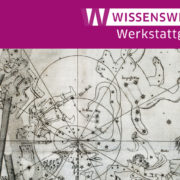 SBB-PK On 6700
SBB-PK On 6700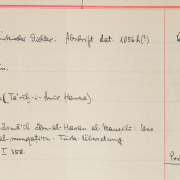 Foto: SBB-PK / CC BY-NC-SA
Foto: SBB-PK / CC BY-NC-SA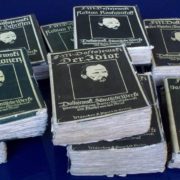
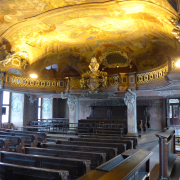
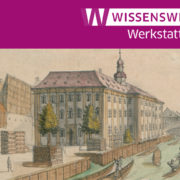 Bildausschnitt: Aquarell Breslau, Zuchthaus. Aus: Stridbeck, Johann: Skizzenbuch : Ms. boruss. qu. 9a , 1691. SBB-PK
Bildausschnitt: Aquarell Breslau, Zuchthaus. Aus: Stridbeck, Johann: Skizzenbuch : Ms. boruss. qu. 9a , 1691. SBB-PK 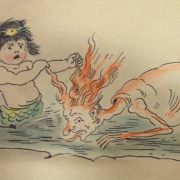 Public Domain
Public Domain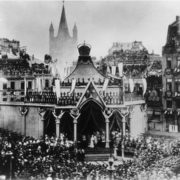
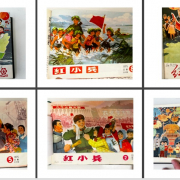 Foto: Sanjiao Tang
Foto: Sanjiao Tang

Ihr Kommentar
An Diskussion beteiligen?Hinterlassen Sie uns einen Kommentar!